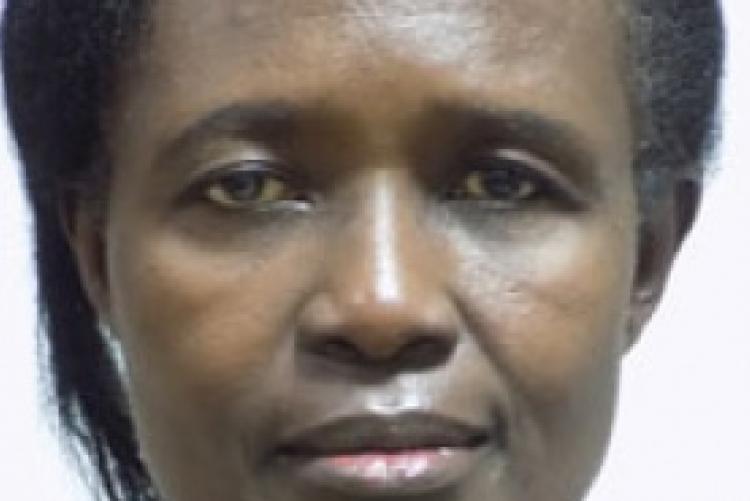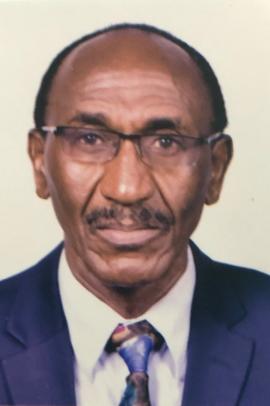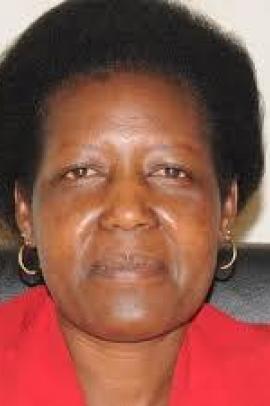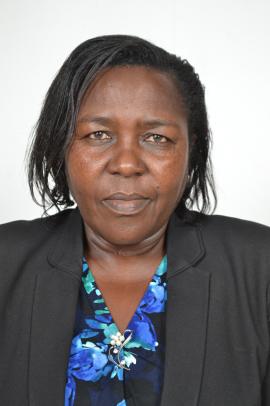The impact of COVID19 on the international education system
Anne Achieng Aseey
Senior Lecturer, Department of Educational Studies, University of Nairobi, P. O. Box
30197-00100, Nairobi, Kenya
DOI: https://doi.org/10.51432/978-1-8381524-0-6_8
Abstract
Africa as a continent has had challenges in its social, economic and political setup. COVID -19 pandemic amplified some of the issues the continent is struggling to contain at various levels to ensure sustainability. In terms of Education, the continent is yet to come to terms in realizing universal literacy, career related skills development for 21st century, quality education, infrastructure among others. Achieving 17 Sustainable Development Goals (SDGs) is still a pipe dream. This chapter addresses issues that warrant discussion and raise concerns in education circles in developing continents. The disruptions that affected and impacted on the education sector during the corona pandemic from various standpoints need to be debated and addressed. The chapter will look at issues that impacted on education and how institutional mechanisms were put in place to ensure continuity in education upon World Health organization declaration of COVID -19 as a pandemic. Terms and concepts like online learning, Remote learning ,home schooling, distance learning and others which were not considered as crucial in education became the ‘new normal ‘This study highlights responses at various levels of education and in various geographical settings as to how various governments handled the pandemic. The chapter takes a look of the benefits of using technology during crisis and the value of innovation in continued learning. The role of technology in education and also how it changed and challenged the learning landscape is also highlighted. It also explores instances of equity, unpreparedness and access to quality education at all levels in education.
Chapter and author information
Anne Achieng Aseey
Senior Lecturer, Department of Educational Studies, University of Nairobi, P. O. Box 30197-00100, Nairobi, Kenya
From the Edited Volume
The impact of COVID19 on the international education system
Edited by Dr. Ljupka Naumovska
Introduction
There is a strong belief that education is one of the way human beings can get out of poverty and other earthly troubles to become more responsible, empowered, value and conscious of the needs of the society. Since March 2020, COVID-19 pandemic has had an impact on people’s lives, behavior, ecosystem and symbiotic relations that exist from various perspectives. Ricardo (2020) noted while the Covid-19 crisis has exposed the fragility of Australia’s higher education sector, it has also delivered positive outcomes that will endure long after campuses reopen.
My students and I have found that seeing one another in our homes has taught us to be more human and aware of our differing personal circumstances. We’ve also learnt that it’s just as easy to organize a guest lecture from New “York or Barcelona as it is from Melbourne or Sydney; that Zoom is great for remembering everyone’s names; and that you need not be in the same city, state or even country as your students to lead a course.
The sustainable development Goal 4: Quality education is a major focus in education for all countries. But most African countries despite the pandemic, quality of education offered as compared to the developing countries is still not at par. Several factors impact on quality key among them is the fact that it is second most populous content in the world. This can impact on quality and also on SDG Goal 1: No Poverty. Wekesa (2020) noted that parallels have been drawn between the current crisis and past crises of all kinds. Because the pandemic is both a health and economic problem, the global financial meltdown of 2007/08 has particularly shown an unnerving similarity. This was in reference to Africa where the pandemic showed the differences in governance and emergence uptake with hitches of unpreparedness and uncertainty in most circumstances.
Status of Education in Africa
In most developing countries, teacher preparation process, learners preparedness at all stages, infrastructure, quality, access, population, finances and teacher preparation has been some of the major bottlenecks among others Africa experiences. Scholars noted various areas of concern even before the pandemic and one of the most noted was education in crisis situations. The report further elaborates that in Africa the crisis in education are further confounded by military attacks on education institution;
Those attacks and military use of schools and universities represent a huge threat for students and teacher’s security as they damage and destroy the few available school infrastructures. It lead to high drop-out rates, reduce enrollment and lower the teaching quality and the results. Girls are particularly negative affected as it exacerbates the challenges they already face to access education in conflict zones. (CESA 16-25 2016 – 2025 pp.8)
There is need to generate an interest, more debates and research on how best this situation hampering education in Africa could be resolved during and after the pandemic. This will create new understandings and stakeholder pathways on how people engage and learn during crisis like COVID -19. The disruptions could be taken as assets and opportunities to create new frontiers especially in developing countries where the education systems need to be planned for and become more innovative to contract the various challenges hindering effective teaching and learning process.
Incheon declaration (2015) noted the serious concerns in education like the fact that a large Proportion of the world’s out-of-school population live in conflict-affected areas, and that crises, violence and attacks on education institutions, natural disasters and pandemics continue to disrupt education and development globally. The corona pandemic is just one of the pandemics which has hit the education sector hence there is need;
.. for education stakeholder to commit to developing more inclusive, responsive and resilient education systems to meet the needs of children, youth and adults in these contexts, including internally displaced persons and refugees. We highlight the need for education to be delivered in safe, supportive and secure learning environments free from violence. We recommend a sufficient crisis response, from emergency response through to recovery and rebuilding; better coordinated national, regional and global responses; and capacity development for comprehensive risk reduction and mitigation to ensure that education is maintained during situations. Incheon declaration (2015).pp 6-7
In Africa, most activities from social, political and economic stalled due to Coronavirus outbreak. The African Union (AU), Centre for Disease Control (CDC) officials stated that the coronavirus epidemic was an “existential war for the continent. In education sector, the situation may never be the same with over 1, 268,164,088(72%) of learners out of their institutions in over 177 countries in April 2020. These institutional closures, alongside hashtags like, lockdown, social distancing and stay at home requires new innovative approaches to conceptualize. The school in its own way is not only abuilding of ‘brick and mortar ‘but carry with it a lot of symbolic significance to the learners, teachers, parents and the community. Schools and other educational institutions are central to a number of people’s lives. Stromquist (2018), indicated that, contemporary society makes it imperative that all of us have access to formal education, with the result that most children and youth spend many years in schools. Further, adults who serve in them sees the schools as much more than a place of work as they double as vital places to shape the mental horizons of new generations, to convey both wide and deep knowledge, to foster values that produce healthy and stable societies, and to promote solidarity and avoid rivalry and hatred.
Planning for education in this pandemic requires three approaches. The first is a stop gap approach to ensure Maslow before Bloom, safety and survival first before formal education, during this first school closure. The second approach will include carefully considered long-term solutions that address the inequities in education that are exposed when schools are not physically accessible. The third approach will spark pedagogical innovation towards blended learning in all schools and other education institutions for inclusive and equitable education for all. These approaches proved crucial during the pandemic when various approaches had to be utilized to make learning realistic though with various degrees of success and failure.
The COVID -19 pandemic saw the role teachers carry and the various responsibilities attached to their responsibility. In most countries in Africa school classrooms have remained remarkably consistent over time and acts as geographical space where learners and the teacher converge. The teacher basically interact with the learners in the enclosed environment. During the pandemic, school children lost access to their teachers, their classmates, and the school environment which they have been familiar with.
One parent respondent had this to stay ,’‘ in the slums in Nairobi County in Kenya Nairobi ,it’s hard and expansive to have the children at home as they eat and play a lot’.
Another respondent, a male university student aged 21 years old indicated that, ‘the pandemic has made them to relook at education and skills acquisition. He has taken time to work on income generating project during the pandemic and has put education a side for a while.
This scenarios creates challenges for the strategies which various frameworks have been working on to improve education in countries in Kenya.To implement the 2030 Education Agenda (Incheon declaration 2015), the focus were on the relevance of teaching and learning, right through to higher education. This involves adapting curricula and pedagogies, training teachers and drawing on new knowledge from the field of cognitive sciences. This adaption could have worked well for teachers during COVID-19.The need to challenge the entrenched model of the school classroom has slightly been integrated in few countries in Africa. Such challenges could not allow proper in mentation of online learning, remote learning and blended learning in most countries especially in Sub Saharan Africa and other countries where systems were not in place. The challenge on remote learning was expounded during COVID 19 as follows;
It’s a problem facing millions across the African continent. “There are approximately 250 million students that are sheltering in place or quarantined or under emergency orders or just can’t be in classrooms,” and “It’s an enormous amount – 75% percent of them – as a consequence of the abrupt nature of the shutdowns, don’t have access yet to the innovative remote learning tolls” former U.S. ambassador to South Africa Patrick Gaspard.
During COVID -19, some of the strategies and approaches used in availing education to the leaners has been through homeschooling, radio, the television, remote learning, online learning, distance learning, blended learning, gamification and the like. Radio has been used to deliver education to most countries in Africa for a long time for instance, in the Benin Republic, radio was used to educate rural peasant farmers in the 1960s (Nwaerondu and Thompson,). The process involved the organization of small listening groups, called “Radio Clubs,” formation of national and departmental committees, use of village chiefs as presidents of the radio clubs and the use of animators as group leaders. The potential of radio to motivate listeners to take action, modify behaviour, and undertake activities is evident in the literature reviewed thus far. In some cases, radio has been used effectively to advise populations of new government policies and to encourage discussion, feedback, and eventual support for new measures. Radio has also been used to promote community development, innovation, and other programs in which self-help and community participation are essential (Bryam, Kaute & Matenge, 1980; Cassirer, 1977; Punasiri & Griffin, 1976).
During the corona pandemic, countries like Kenya used Radio for education purposes but especially at low levels of learning where various programmes were prepared by subject teachers to meet the demand of continued learning during the pandemic. But this was not sustainable and both leaners and teachers were not adequately prepared for the activity. In total, over 18 million students in Kenya have been affected by the closure of schools. An extended period of closure will impact children’s wellbeing and have a long-term impact on inequality, as the most vulnerable families may not send children back to school;
UNICEF is focusing on providing the most vulnerable children with access to learning, including those in informal settlements, refugees, and children with disabilities,” UNICEF Kenya Chief of Education Marilyn Hoar says. “We are supporting out-of-classroom learning on radio, TV and online, and informing parents how to access lessons. We are also preparing guidelines for the safe reopening of schools’. (Brown and otieno pp.2)
In china the situation was not far from Africa as one Chines parent reported to that they are living in China with their children for the past several weeks in the beginning of January 2020, the children were confined to their homes, working and going to school remotely. But they have some experience on how to stay reasonably sane and productive through the challenges of being confined indoors for weeks on end (HuffPost, 2020).Many respondents in this study indicated several months staying with their children at home during the pandemic months .This at times created a sense of uncertainty and other family issues and vices in the family like early pregnancy, drug abuse and others were noted to be quite rampant during the pandemic.
In Kenya, all educational institutions were closed down under the directive of the prudential order in mid-March 2020. The institutions at all levels were then tasked with looking for alternative ways and means of ensuring that learning continues remotely.
Though the position of remote learning is still bleak in Africa as compared to other Countries as less than 25 percent of low-income countries currently provide any type of remote learning, and of these, the majority are using TV and radio. In contrast to developed world where, close to 90 percent are providing remote learning opportunities, with almost all offering services online.
In adapting and adopting new learning and teaching paradigms, the education sector had to leverage the assets of homebased learning and as they stay and work at home, rather than trying to recreate school. The Remote mode of learning is capable of bringing private meaningful learning experiences that can connect to leaners home environment, interest and local identities and also use the available devices in the home environment. It may come with its merits and demerits but because the instructor is not immediately present in front of the class as leaners in Kenya are used to, some necessary adjustments had to be done by the education institutions and the learners (pupils/students).In higher education, especially universities, existing polices had to be redrafted to include online learning pedagogy as an emergency pedagogy. The new teaching approaches received mixed feelings from policy makers, service providers, students and other stakeholders. But to save on time and normalize the situation, strategies were set and remote learning implemented in most educational institutions. Learning continued both in synchronous and asynchronous modes and institutions were able to cope with the termly and semester requirements alongside providing reading resources remotely as done by the University of Nairobi through utilization of electronic resources with thousands of learning resources available remotely. These initiatives were lauded by majority of education stakeholders as remote learning and homeschooling concepts have been embraced at relevant levels.
From the instructor’s perspectives, remote learning has its challenges like lack of well-defined infrastructure systems, lack of adequate preparation for the sudden charge, having both students and instructors at home same time , lack of internet connectivity, students preparedness ,cost of teaching and preparation for online teaching, online assessment and evaluation nightmare among others.
For students, attitude change is still needed, lack of reasonable and relevant devices to facilitate the learning process, some from nomadic communities are notable to be in one place during scheduled classes, students with disabilities losing in the online process, lack of internet connectivity in rural areas, no preparation on migration from face to face to online learning and others. For institutions, the move from school to remote learning comes with several challenges like cost, policies to implement it, structures and facilities, staff training, relevant and available resources, student’s diversity, examination issues online and others.
Educational institutions have somehow weathered the storm in meeting the demands for enhanced teaching and learning using an array of devices during the COVID-19 pandemic in Kenya. These achievements may change the education system in the country for some years to come with learners utilizing and appreciating the value of digital devices they have in their hands like mobile phone, smart phones, laptops, tablets and others. For institutions, the whole process of learning and teaching though tedious, will drastically change to incorporate new inventions and innovations which will aid and assist in offering quality, relevant and competitive education. This will go alongside help in achieving the Sustainable Development Goals (SDGs) for all in low-income economies wherever and whenever they are in time.
This study researched on how education systems in Africa reacted to COVID-19 in terms of learner and teacher preparation during the pandemic, use of technology for teaching and learning; role of education stakeholders during crisis, availability of relevant resources and financial challenges. Another key component of this chapter is assessment. Webber (2012, p. 202) defines assessment as playing the role of evaluating a student’s comprehension of factual knowledge. More compressive definition states that assessments are activities designed primarily to foster student learning. Webbers definition of assessment came handy during COVID -19 pandemic as learner-centred assessment activities included “multiple drafts of written work in which faculty provided constructive and progressive feedback to students as they continued with remote learning though was more of a challenge in countries like Kenya where there is poor network in rural areas and the students too lack electronic devices for online assessment.
Study approach
The approach presented in this paper was based on practices of education at level various levels during COVID-19 pandemic 2020. The study relied on information from ,scholars, reliable media, sources reports, authentic International reports and internal reports, opinion leaders and think tanks from webinar series and panel discussions mainly on education and COVID-19,education institution websites , global respondent’s online and interviews ,local respondent questionnaires and interviews and WhatsApp groups from Global perspectives. These fora and the sources provided a rich source of information to enable scooping review to take place. The target population for the respondents were teachers, parents, education administrators, IT staff and service providers, the community was also a major source of information. The information gathered was quite up to date in relation to what was happening during COVId-19 though situations kept changing and new concepts and reports kept flowing in and out.
Private and public actors involved in education are quite diverse. This study also narrated how various stakeholders were involved in education during COVID-19 pandemic to ensure continuity and uptake of courses by learners. This study targeted both local, national and international education stakeholders who were involved in ensuring continuity and normalcy was realized despite lockdowns, curfews and other restrictions during the pandemic. The stakeholder engagement were in terms of trainings, ICT service providers. Media houses, publishers and the like.
Theoretical framework: Change Management Theory
This study is grounded on Michael Fullan Change Management Theory. His work is grounded on educational change. The theory is focused on “the human participants taking part in the change process” (Ellsworth, 2001). The New Meaning of Educational Change presents guidelines for resisting, coping, or leading change efforts from perspective ranging from the student to the national government. Fullan (1982, 1991) focuses on the roles and strategies of various types of change agents.
Popular learning strategies adopted
The education sector in most Africa countries have all along concentrated the school symbol of the teaching and learning process. Institutions like universities are revered as epitomes of knowledge. That is why despite the challenges realized during COVID-19 pandemic, a number of universities in both developed and developing economies try to adjust to other modes of operation and teaching because universities are seen as the ones to guide the education process at each level and to be a role model to others. According to Bates (2019);
There are very good reasons why universities have been around for more than 800 years, and are likely to remain relevant well into the future. Universities are deliberately designed to resist external pressure. They have seen kings and popes, governments and business corporations, come and go, without any of these external forces fundamentally changing the nature of the institution. Universities pride themselves on their independence, their freedom, and their contribution to society. So let’s start by looking, very briefly, at these core values, because any change that really threatens these core values is likely to be strongly resisted from professors and instructors within the institution.
To survive during the pandemic, education institutions adopted various coping teaching and learning strategies and frameworks.Education being the key sector of the economy was thrown in disarray and confusion. Various learning models like distance learning, home schooling and other approaches took the centre stage in the education sector as indicated by various stakeholders. One of the mode of learning which was quickly and hastily adopted was blended learning. Defined as learning using a combination of traditional face-to-face learning and distributed learning, is considered an instructional model that allows lecturers, students, and content to be in different locations (Williams, Bland, and Christie, 2008). Remote learning has taken the centre stage during covid-19.It’s more of trial as children, teens and adults shifted from their classrooms to embrace remote and hybrid learning. From one of the WhatsApp followed in this study, one of the participants from a sub-Saharan Africa taking a massive open Online course (MOOC) on how to teach online had this to say after completing the eight weeks MOOC course organized by the Open University of United Kingdom and African Council for Distance Education (ACDE)
‘….I shall adopt the different approaches I leant to my teaching professions so that learners will take a participatory approach to my teaching thereby making less stressful for them to understand ,especially practical oriented course” course participant August 2020
It was more of trial in the era of COVID-19, and no sector was affected like the education sector with school going children, teenagers and their parents and caregivers resorted to home schooling, remote learning and use of Zoom, google hangouts, webex and other forum. The new learning platforms created success stories and were also a source of suffering and depression for some students in low income economies who could not afford to go online or had no knowledge of how to go about learning using electronic devices. The respondents indicated that they were not sure of the security of the platforms like zoom and others. And especially the recorded classes.
The other issue related to security was the WhatsApp groups. A number of WhatsApp’s groups which were created as result of COVID-19 were created by schools at various levels to get in touch with the students, some created by groups of parents to ensure contact with the schools. At University level, the respondents indicated the same scenario of more social groups were created for particular classes, courses, institutions based and even for social networking. The WhatsApp platforms were reported to have eased the negative effects of COVID-19 like isolation, depression boredom and many more. Students especially those in colleges and universities were created to connect with their colleague their course tutors and administrators and get updated information.
For the teachers and lecturers too in most countries in Africa just like Kenya, remote learning, distance learning and home schooling caught them off-guard. Online learning and teaching platforms like zoom, google hangouts, Microsoft teams and others were seen as alien by respondents who indicated they had to adjust and learn fast on how to join and use the new models and devices to deliver their classes and conduct exams.
One lecturer respondent noted that;
‘I am really not sure how to log in and log out of my class and half of y students cannot access the platform used. There is need for further training on this’
Majority of the respondents in this category indicated that they were not prepared to teach online or they have not been trained to teach online. (Hara, 2000; Hara and Kling, 1999; Welker and Berardino, 2005-2006) in their studies, noted that difficulty with more sophisticated technologies is another challenge for implementing blended learning. Armand et.al.,(2020) noted that we can keep some children learning, but providing an equitable and universally inclusive public education for all is not possible under current condition in many jurisdictions.
School closures mean that the infrastructure we have always relied upon to ensure equitable public education such as schools, textbooks, technology at school, teachers, and classrooms is now unavailable to students. Despite the existence of distance education programs, and other online resources the fact is many students will not have reliable access to these because of both structural, and socioeconomic barriers. Over half of the world’s population still has no access to the internet. Political leaders must provide resources and political will to find solutions that address the inequities The Impact of COVID-19 on the International Education System: Disruptions in Low-income Countries 125 but also equalize inputs so that the requisite infrastructure is in place when schools reopen (Amand et.al, 2020.pp.5)
Another challenge noted by respondents in this study which impacted on education outcome during the pandemic was on the use of technology and internet availability which most of the respondents indicated was a challenge and a major issue. Biggs and Tang (2011) posited that there is need to improve teaching and learning outcomes in meeting the demands for improved teaching for a broader range of students.
Further, this will go a long way in recognizing that good teaching is as much a function of institution-wide infrastructure as it is a gift with which some lucky academics are born Studies on low internet connectivity has concluded that poor internet connectivity has been reported to inhibit students’ ability to engage in online discussion and creates considerable frustration which can negatively impact learning (Biggs and Tang, 2011, Smyth et al., 2012, King, 2002)
One teacher respondent had this to say on internet connectivity and learning;
When technology issues arise in the middle of a class session because of limited bandwidth, lousy microphone, frozen video, uncontrolled background noise and others, the situation can be messy and out of control. It’s much easier to help a student in a physical physics class but quite difficult to do that online, it’s easier to rectify an exam anomaly online but difficult to assist a student upload his/her examination sheet online..
In terms of policies that promote new models of learning, the study realized there was need for government and institutions to formulate policies and procedures that encourage good teaching and assessment across institutions and various education levels. This could caution the various scenarios realized when online and home schooling mechanisms were implemented across board in several education institutions. A study by Lizzio et al., (2002) concluded that elements of the learning environment, which can be influenced and controlled by instructors, affect not only how students approach studying, but also the subsequent learning outcomes they attain.
Remote and hybrid learning though has been in Africa for sometimes was considered new and brought about by COVID19.It was noted that learning remotely can help in access to education especially in African countries where thousands of learners are out of school due to various issues like conflicts, poverty, historical injustices among many more.
2.3 Reversed online system
African countries are yet to invest more in education. In most of the countries in the continent, education budget has never been enough to meet all the educational expenses. Despite the fact that the resources are diminishing, the sector has received a number of young and aggressive learners who are online 24/7.This calls for enhanced learner support services to be proved at various levels to enable the learners not lose focus. The study found out that most institutions especially the government funded institutions in many African Countries had challenges of financing and could not easily cope up with the requirements on online and remote learning as the pandemic continued disrupting the flow of things.
Additionally, with more and more colleges moving to online and hybrid class offerings, it is critical to serve these students with comparable services to meet required quality standards and enhanced support student success.
The digital native–digital immigrant metaphor segregates the individuals who are assigned these labels and results in an unequal power structure. It also implies that the immigrant can never become a native, which may serve to excuse individuals without tech skills (e.g., I don’t know how to fix the computer, because I’m a digital immigrant).In most situations, the education sector in Arica is underfunded and ill equipped to handle normal school routines especially the government schools.
Schools use all kinds of technology to varying degrees, but the technologies to support in-class learning only partially overlap with the technologies needed to support distance learning. But certainly our schools, especially urban and rural schools, are dreadfully underfunded, and that insufficient investment will be increasingly revealed in the weeks ahead. This study noted that Schools were not only ready in having and training staff on available resources for education uses in crisis but also lacked the knowledge to use the emerging teaching and learning models.
Patta( 2020) noted that in South Africa, as coronavirus lockdowns forced millions of young people around the world to adapt to online learning, access to the internet has become one of the biggest challenges in the world’s poorer communities(CBS News May, 2020).The internet scenario . Reich, an assistant professor of comparative media studies and director of the Teaching Systems Lab at the Massachusetts Institute of Technology, points out that internet access is a scarce commodity for many Americans. Just 56 percent of adults in households earning below $30,000 have broadband internet at home, and about 17 percent of adults access the internet at home through a smartphone only. This situation is more profound in Africa where internet penetration is quite slow especially in African Countries rural areas where at times electricity is a challenge.
Conclusion
COVID-19 is one of the highest disruptions in education if history will be written. Schools and other education institutions in Africa closed in March 2020 and the situation was realized in other parts of the world. Stakeholders had to be involved and engaged to enable learning to continue despite the disruptions especially in African countries where preparation for alliterative learning strategies were not in place. Emerging technologies had to be put in place and adjustments were done to the education sector to cater for the disruptions at various levels.But these adjustments had been done with consideration to the capability of the people involved, availability of resources and government responses to the situation. Community involvement has also been at the forefront in ensuring learning is on in schools and other education institutions ether remotely or on distinct face to face basis as the situation allows. The chapter expounds on the disparities which exists in education in different countries in Africa and at different levels and with verifying degrees as per the region and location. Resources has been noted as the pillar to education whether in class remotely or in home environment. Teacher’s capability and resilience is quite crucial in ensuring the education process goes on as they are the pillars of the education process and they role and participation becomes crucial. This also calls upon education planners and policy makers to re-imagine the training and preparation of teachers and other tutors at all levels to have necessary skills to impart knowledge to learners in the 21st century.
The pandemic has also opened new avenues of partnership in education to all. Educators at all levels have now realized the value and importance of working with relevant stakeholders like system developers, innovators, internet providers, telecommunication networks, technology providers and others to ensure quality education in line with the sustainability development goals.
The other issue which was realized during the study is the need for more investment in education. There is need to have relevant and related technology in education for the benefit of all leaners .This calls for various governments to ensure more allocation of resources to the education sector especially in low income courtiers so that all learners are empowered. This will also ensure that the digital divide realized in many low income countries is cushioned and managed well so that learners can compete well globally.
Appendix 1
Using zoom for new student’s orientation at the University of Nairobi, Kenya- September 2020
Acronyms and Abbreviations
AU-African Union
CDC: Centre for Disease Control (CDC)
SDGS: Sustainable Development Goals
TV: Television
- Log in to post comments






